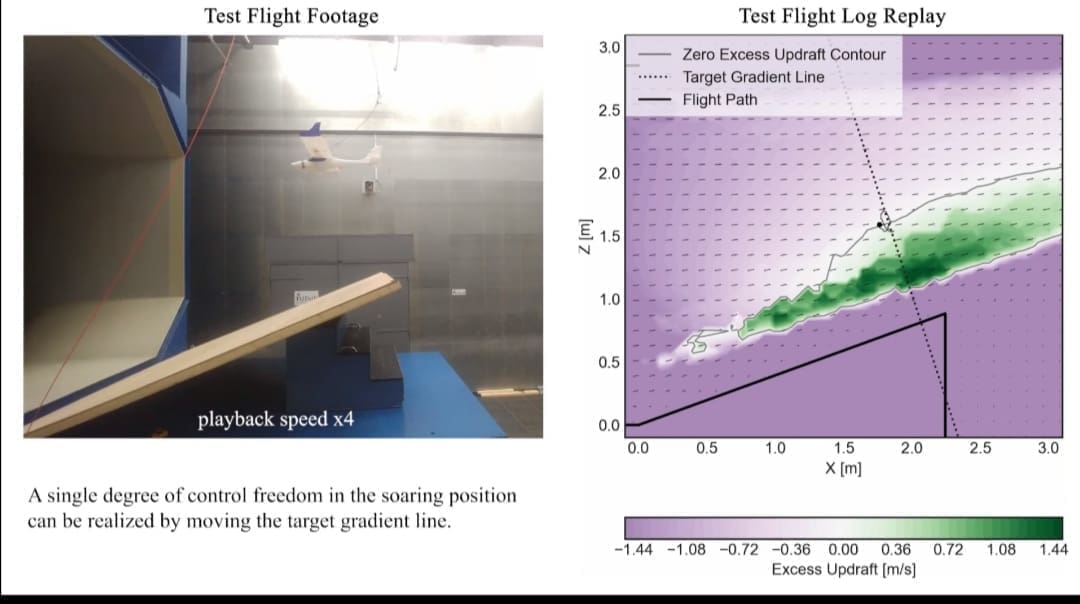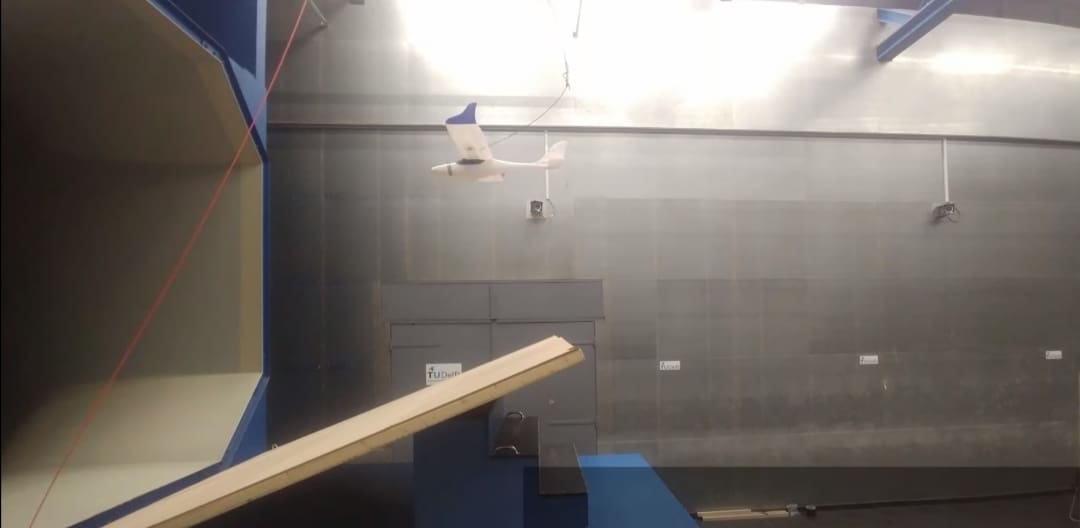Researchers in the Netherlands have unveiled a drone that replicates the flight techniques of birds, resulting in a winged drone that soars with unprecedented ease compared to its counterparts, this innovative creation consumes minimal energy to remain airborne.

According to a study conducted by the researchers, which has yet to undergo peer review, their bird-like drone, weighing around 680 grams, utilizes its propellers for only 0.25% of the time it remains stationary in an air tunnel, in contrast, a conventional flight requires propellers to operate for around 38%, this translates to an efficiency increase of approximately 150 times, a remarkable leap in efficiency.

The researchers have coined this specific flying technique as “aerial perching.” Essentially, birds achieve this aerial feat by riding on upward currents of wind, maintaining a steady posture, and then descending at an optimal rate.
Replicating the complex biological mechanisms is rarely straightforward, birds, such as albatrosses, exhibit incredible flying prowess, with one being observed in flight for over five hours without flapping its wings even once, in comparison, high-quality consumer drones can fly for about half an hour per session.
Storing sufficient energy for consistent propeller use, or “endurance during flight,” remains a major challenge for drone designers, additionally, birds hold a significant advantage over machines – their innate understanding of wind, allowing them to harness dynamic gusts much like a sailor maneuvering a sailboat, this intuitive feature became the focus of the researchers, who developed an independent algorithm to control the drone’s interaction with varying winds, the algorithm relies on an array of sensors to perceive the aerial environment, including an airspeed sensor, GPS system, and a camera.

Dr. Siong Hoe Pang, the lead author of the study and an aerospace engineer at Delft University of Technology in the Netherlands, told New Scientist, “When the wind field changes, it adapts to its surroundings and changes position autonomously, it always tries to find a new position if the current one is not beneficial; it’s extremely flexible.”
While the flight durations achieved here are limited to around 30 minutes, the simplicity of the drone’s design and its minimal propulsion and intervention requirements remain impressive.
Jonathan Aitken, a professor of control systems and robotics at the University of Sheffield, noted to New Scientist that these results hold promise for use in small unmanned aerial vehicles.
However, the algorithm would need to respond faster to keep pace with real-world winds.

